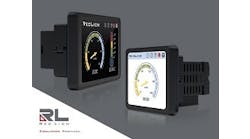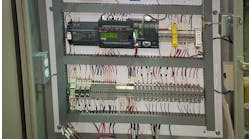Dr. Otto Fest, president of Otek, maker of the Solid State Analog Meter (SSAM) and Universal Panel Meter (UPM), is a smart guy whose wit and work ethic have contributed largely to his success. Even now, in his 80s, Fest works seven days a week. “I get some of my best work done on weekends when no one is around to bother me,” he says.
Back in the 1960s, Fest started his career as a nuclear physicist and then switched to analog circuits and worked for NASA's Apollo program and then at Zenith Radio where he was manager of advanced research and development on products for 10 years or so. He gave them many patents.
With the Apollo program, unfortunately, much is still classified, but Fest had some great comments about it. "Apollo is responsible for the Technical Revolution in our great country, no less important than the Industrial Revolution of the 17th century in England," says Fest.
During the glorious Apollo program, Fest was honored to work with a team of engineers in developing the first wireless sensor, and it was quite the sensor with quite the sensing range. It was the first to use a laser and a hybrid analog-to-digital, digital-to-analog converter to measure the distance between Earth and the moon. "We found that we are losing the moon at a rate of approximately 2.176 centimeters a year. Enjoy the moon while you can because it will be swallowed by the sun in approximately 4 billion years when it becomes a super nova."
Most of you are probably too young to remember what a cricket was in the 1960s. "Inside the tube TV, we put a tuned microphone to detect the click of a remotely located, tuned-cadmium-coated steel bar when it hit a copper plate," says Fest. "The first click was power on, the second, power off," he says. "The result was the world's first wireless remote control to turn a TV on and off. And then came the channel up and channel down, with additional functions added later."
Sometimes to create innovation all it takes is watching a barge move some freight down the Mississippi River. Talking to a customer and watching the Mississippi flow by, Fest saw a barge going downstream, full of coal, but without any smoke coming out of the stack. At about the same time, a barge was going upstream, empty, but puffing black smoke like crazy. That gave Fest the idea that there is energy there to be used. That translated into the first parasitically operated, current-loop-powered digital panel meter.
Fest's father said simplicity is the mother of reliability. If you can ever invent something that has no parts, nothing will ever go wrong with it. That's something that has followed Fest for the past 70 years or more.
"Regarding inventing and the barges on the Mississippi, I applied what my father taught me without even knowing—observe, analyze and document," says Fest. "Why are those important?" he asks. "Those three items are important for any inventor. Observe because everything around you can be made better and improved or a bear a new idea. Observing with detail is extremely important."
Analyze the subject you are observing to understand what is happening and what it is you intend to do to make it better, continues Fest. "And what I think most important is documentation, yet most people seem lacking in this area," he says. "They think of what they can improve and invent, but they just put it in the back in the brain—filling up the filing cabinet in their head. Instead, get a piece of paper and write it down or organize it electronically; otherwise you brain is going to ignore it."
Fest took advantage of new technological developments in the industry and used it for parasitic operation of the electronics. When he first started with the current loop back in the early 1970s, it was obvious that it was a source of energy being wasted. The current needed to be produced to transmit the analog value of the process a given distance. That current can be used to power electronics in a panel meter.
Recently, Fest took an old application and made it work with new technology. "The reason we resuscitated the SSAM originally conceived in 2004 was to offer the critical industry an alternative when digitalizing a control room since the Nuclear Regulatory Commission had mandated adequate protection against cyber attacks that forced the industry to spend millions of dollars, with no ROI, when using regular, modern meters, with microprocessors and EEPROMs (electrically erasable programmable read-only memory) to replace obsolete analogs units. The SSAM replaced analogs meters 100% in a 1:1 basis, so no additional cybersecurity was needed.
Instead of an analog meter, the SSAM is a digital meter with no microprocessor, which would create significant cybersecurity expenses. "Using the SSAM, they can upgrade their system into a digital panel without having to go to a tremendous expense to make it cyber-secure," says Fest. "Drop in the new digital meters to replace the troublesome analog meters. The operators love it because with a glance they can tell if the unit is within limits. They don't have to get within 10 inches of the meter to see the value."






